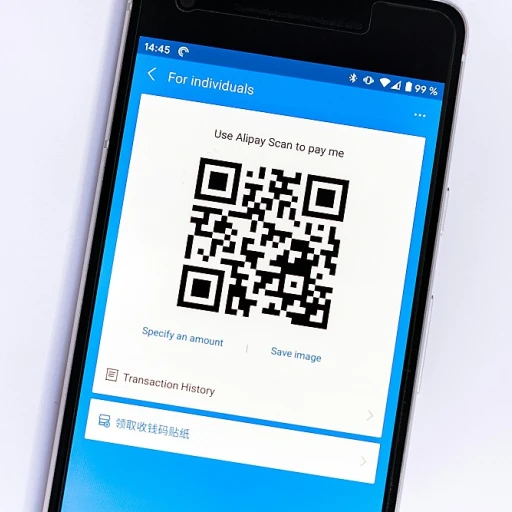
Aligning technology with business vision
Translating Vision into Digital Reality
For CEOs, aligning technology with business vision is not just about adopting the latest frameworks or tools. It’s about ensuring that every app development decision supports long-term growth and market differentiation. The journey from garage to global impact starts with a clear understanding of how cross-platform app development can bridge business goals and user expectations.
Choosing between native and cross-platform solutions is a strategic move. Native apps for iOS and Android often promise high performance and a tailored user experience, but they can slow time to market and increase costs. Cross-platform frameworks like Flutter and React Native, on the other hand, enable businesses to reach multiple platforms with a single codebase. This approach accelerates development, reduces overhead, and ensures a consistent user experience across devices.
CEOs must also consider the future scalability of their platform apps. As the business grows, so does the need to support new features, integrate third-party tools, and adapt to evolving market demands. Cross-platform development offers the flexibility to innovate quickly, test new ideas, and respond to user feedback post launch—without being locked into a single ecosystem.
- Faster time to market with a unified development garage approach
- Consistent user experience across mobile apps and platforms
- Optimized resource allocation for global cross-platform expansion
Ultimately, aligning technology with business vision means choosing a platform development strategy that supports both immediate objectives and long-term ambitions. For more insights on strategic growth and aligning digital initiatives with sector-specific opportunities, explore this resource on navigating strategic growth in the healthcare sector.
Evaluating the ROI of cross-platform solutions
Understanding the True Value of Cross-Platform Investments
For CEOs, evaluating the return on investment (ROI) in cross-platform app development is more than just a numbers game. It’s about aligning technology choices with the business’s long-term vision and market ambitions. The decision to build apps for multiple platforms—iOS, Android, and beyond—using frameworks like Flutter or React Native, can unlock significant value if approached strategically.- Single Codebase, Multiple Platforms: Developing with a single codebase reduces time and cost compared to native app development for each platform. This efficiency accelerates time to market and enables businesses to reach users on both mobile and web without duplicating efforts.
- Performance and User Experience: Modern cross-platform frameworks deliver near-native performance. Tools like Flutter and React Native help ensure that user experience remains consistent and engaging, which is crucial for app adoption and retention in a global market.
- Post-Launch Agility: Cross-platform apps allow for faster updates and bug fixes across all platforms. This agility supports continuous improvement, as discussed in leveraging data and user feedback for ongoing optimization.
- Cost Efficiency and Future-Proofing: By investing in cross-platform solutions, businesses can allocate resources more effectively, focusing on features and innovation rather than maintaining separate codebases. This approach also makes it easier to integrate with third-party tools and adapt to future platform changes.
Measuring ROI Beyond the Obvious
ROI isn’t just about upfront development savings. It’s about the long-term impact on brand reach, user engagement, and the ability to scale from garage to global. CEOs should consider:| Factor | Impact |
|---|---|
| Time to Market | Faster launches mean earlier feedback and revenue opportunities. |
| Platform Coverage | Reaching users on iOS, Android, and web expands market presence. |
| Maintenance Costs | Lower ongoing costs free up budget for innovation and scaling. |
| User Experience | Consistent, high-quality experiences drive loyalty and retention. |
Managing risk in multi-platform environments
Mitigating Uncertainty in a Multi-Platform World
For CEOs, managing risk in cross-platform app development is not just about technology—it's about safeguarding the business vision while navigating a complex global market. As businesses scale from garage innovation to global impact, the stakes rise. Each new platform—iOS, Android, web, or even emerging devices—introduces its own set of challenges. The goal is to deliver a seamless user experience across platforms without sacrificing performance or security.
One of the first steps is selecting the right frameworks. Tools like Flutter and React Native allow development teams to build mobile apps for multiple platforms from a single codebase. This approach reduces development time and cost, but it also introduces dependencies on third-party libraries and frameworks. CEOs must ensure their teams are prepared to address potential vulnerabilities, compatibility issues, and performance bottlenecks that can arise post launch.
- Continuous testing: Regularly test apps on all target platforms to catch issues early and maintain consistent performance.
- Security protocols: Implement robust security measures, especially when integrating third-party tools or handling sensitive user data.
- Performance monitoring: Use analytics to track app performance and user experience across platforms, allowing for quick response to any market-specific challenges.
Risk management also extends to the app store landscape. Each platform app store has unique requirements and review processes. Staying updated on these policies helps avoid costly delays and ensures a smoother path to market. Additionally, a proactive approach to compliance and user feedback can turn potential risks into opportunities for improvement and differentiation.
For long-term resilience, CEOs should foster a culture of learning within their development garage. Encourage teams to stay informed about the latest frameworks, platform updates, and global cross-platform trends. This not only reduces risk but also positions the business for future growth.
For more insights on building resilience into your company’s strategy, explore this guide on strategic company growth resilience.
Building agile teams for cross-platform success
Creating High-Performance Teams for Multi-Platform Delivery
Cross-platform app development is not just about choosing the right frameworks like Flutter or React Native. The real differentiator for businesses aiming for global impact is the team behind the code. Building agile teams that can deliver high-quality apps across iOS, Android, and other platforms is essential for long-term success. A strong cross-platform team blends technical expertise with a deep understanding of user experience and market needs. Here’s what sets high-performing teams apart:- Unified Vision: Teams must align on the business goals and user expectations. Whether launching a new mobile app from a garage startup or scaling to a global audience, everyone should understand how the app fits into the broader company strategy.
- Mastery of Tools and Frameworks: Proficiency in tools like Flutter and React Native enables teams to build apps with a single codebase, optimizing development time and performance across multiple platforms. This expertise ensures that platform-specific features and native performance are not sacrificed.
- Agile Methodologies: Adopting agile practices helps teams respond quickly to market changes and user feedback. Regular sprints, iterative releases, and continuous integration keep development on track and allow for rapid post-launch improvements.
- Collaboration Across Functions: Successful platform app development requires close collaboration between developers, designers, product managers, and QA. This cross-functional approach ensures that user experience, technical quality, and business objectives are all prioritized.
- Continuous Learning: The mobile app market evolves rapidly. Teams that invest in ongoing training and stay updated on the latest frameworks, third-party tools, and platform updates are better equipped to deliver future-ready apps.
| Key Team Attribute | Impact on Cross-Platform App Development |
|---|---|
| Single Codebase Expertise | Reduces development time and ensures consistency across platforms |
| Agile Mindset | Enables rapid adaptation to user and market feedback |
| Native Performance Focus | Delivers seamless user experience on both iOS and Android |
| Global Perspective | Designs apps for diverse markets and user needs |
Leveraging data and user feedback for continuous improvement
Turning User Insights into Competitive Advantage
Listening to users is no longer optional in global app development. For CEOs aiming to scale from garage to global, leveraging real-time data and user feedback is a critical strategy. Whether building with Flutter, React Native, or other cross-platform frameworks, understanding how users interact with your mobile apps across iOS, Android, and web platforms is essential for long-term success. Modern app development tools make it easier to collect actionable insights. Analytics platforms, in-app feedback tools, and app store reviews all provide a window into user experience and performance. The challenge is not just gathering data, but turning it into meaningful improvements that drive engagement and retention across multiple platforms.- Continuous iteration: Post-launch, the most successful businesses treat their apps as living products. Regular updates based on user feedback help address pain points, improve performance, and adapt to changing market needs.
- Single codebase, multiple learnings: Cross-platform development enables teams to deploy changes rapidly across all supported platforms. This unified approach means insights from one platform can inform improvements on others, streamlining the development garage process.
- Performance monitoring: Tracking app performance across devices and platforms ensures a consistent user experience. Identifying bottlenecks or crashes early helps maintain high standards as your app scales globally.
- Third-party integrations: Leveraging third-party tools for analytics and user feedback can accelerate the feedback loop, providing deeper insights without heavy investment in custom solutions.
Scaling innovation from garage to global impact
Turning a Single Codebase into Global Reach
Scaling from a garage startup to a global business is no longer just about ambition—it's about leveraging the right tools and frameworks to amplify reach and impact. Cross platform app development, using frameworks like Flutter and React Native, enables businesses to deploy mobile apps across iOS, Android, and even web platforms with a single codebase. This approach not only accelerates time to market but also ensures a consistent user experience across multiple platforms.Optimizing for Performance and User Experience
Global expansion demands that apps perform seamlessly, regardless of device or region. Native-like performance is achievable with modern cross platform frameworks, which allow for deep integration with device features while maintaining efficiency. Continuous monitoring of user feedback and app performance post launch is essential. Businesses can use third party analytics tools to gather actionable insights, helping them refine the user experience and address platform-specific challenges quickly.- Adopt cross platform frameworks to streamline development and maintenance.
- Utilize real-time analytics to monitor app performance globally.
- Iterate based on user feedback to enhance engagement and retention.













